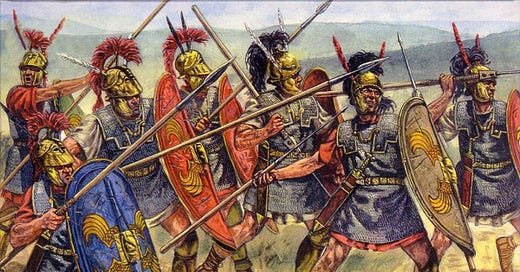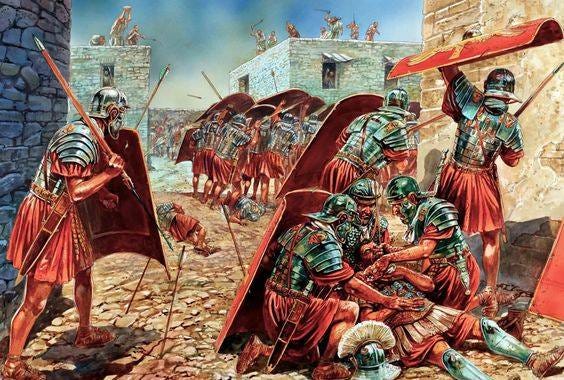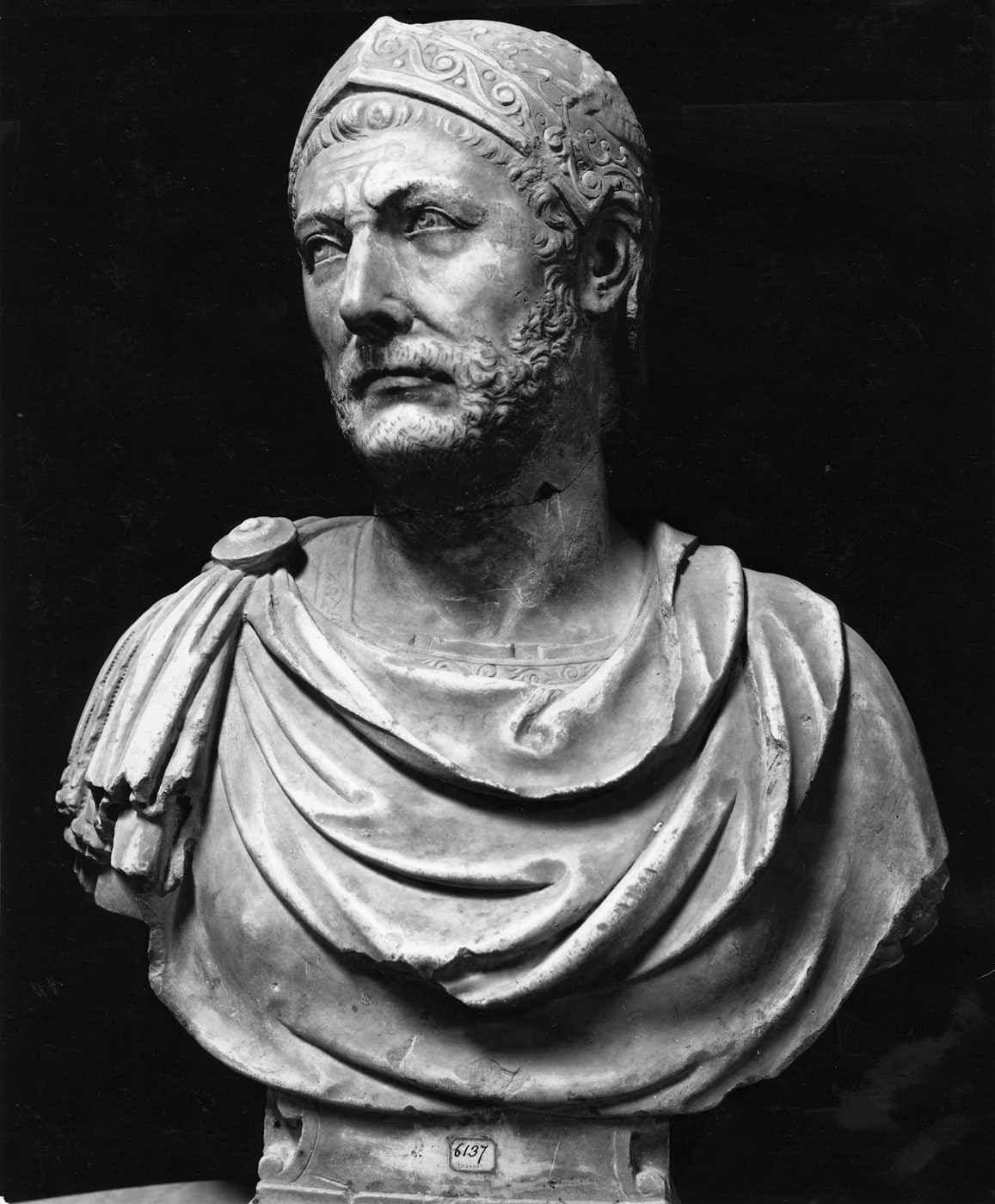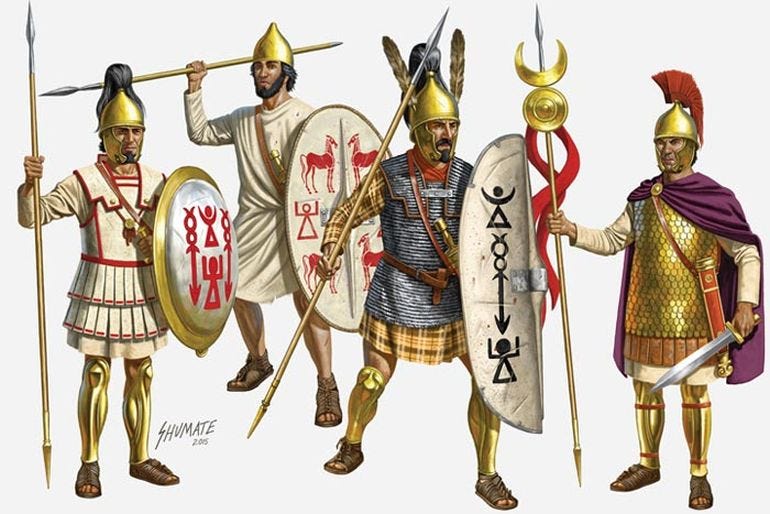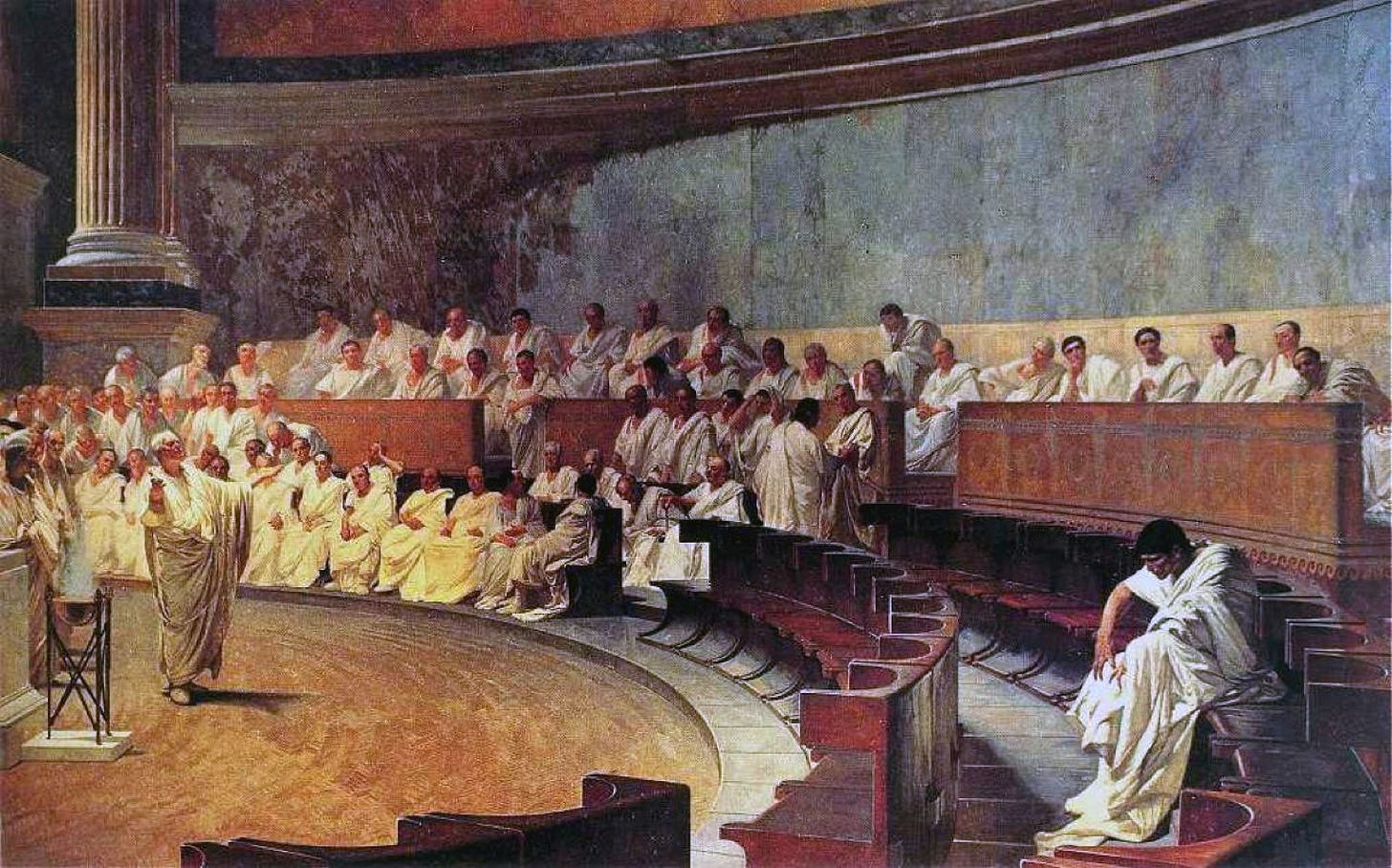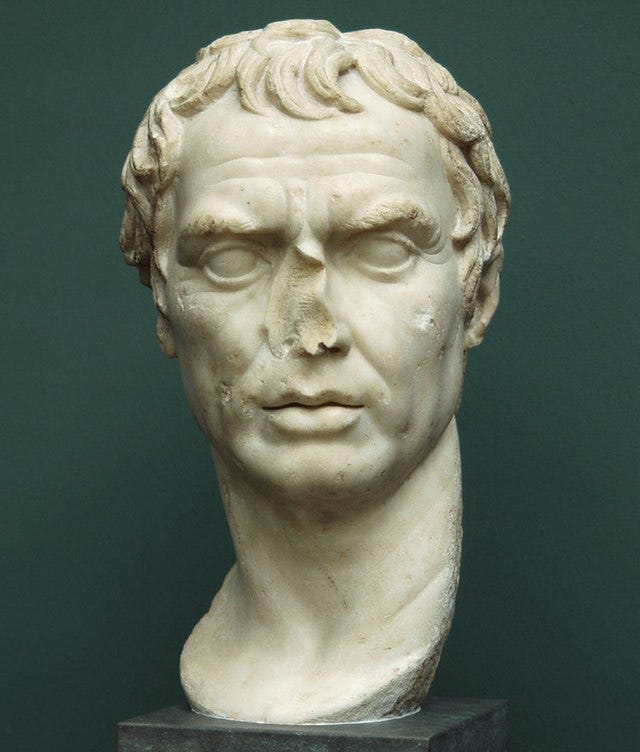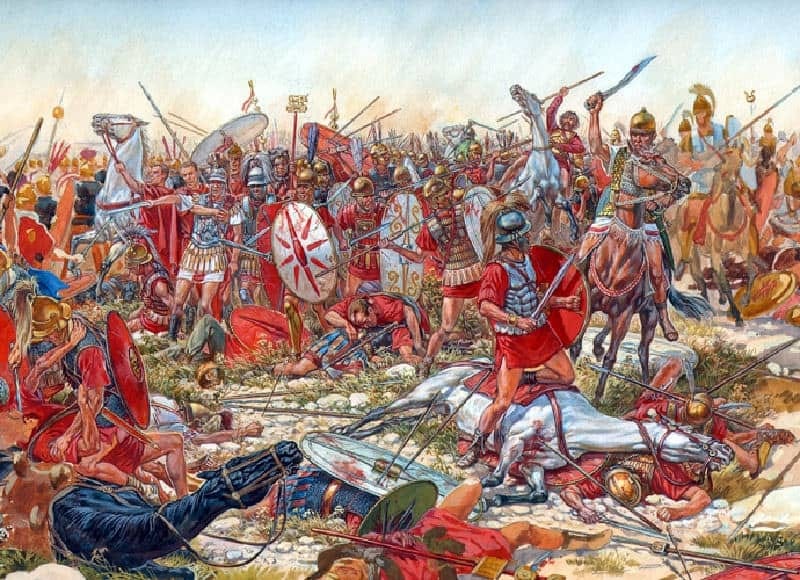Hello Dear Reader,
Today we expand upon our ancient feud between our two Mediterranean colossal foes. One Roman, at the time, may have thought this matter to be over and done with but we know better. Today, we will be coving the First Part of the Second Punic War. A war that would bring shock Rome and the Romans within it. So come, dear reader, take a seat around my fire and let’s begin. The Italian Alps echo with the call of the noble elephant and Carthage has come to take its revenge.
Part 1: Distress
The roots of the Second Punic War lie in the still smoldering aftermath of the First. Though Rome emerged victorious, its actions following the war stoked the fires of future resentment in Carthage. The harsh terms of the peace treaty, combined with Rome’s opportunistic seizures of Sardinia and Corsica, humiliated Carthage and deepened the animosity between the two powers. Meanwhile, both nations continued to attempt to expand their spheres of influence, setting the stage for a renewed conflict which would prove more destructive than the last.
Carthage Rebuilds in Iberia
After its earlier defeat, Carthage turned to Iberia to recover its strength (let us kindly recall that Iberia is now known as modern-day Spain). Under the leadership of Hamilcar Barca, a fascinating general whose exploits were further discussed in our last publication, Carthage established a new base of power in this region rich in resources. Iberia offered an abundance of silver, manpower, and other resources, providing the foundation for Carthage to get back no its feet.
Hamilcar’s ambition extended beyond rebuilding Carthage and personal glory. He sought hot revenge against Rome. His efforts to expand Carthage’s influence in Iberia laid the groundwork for future conflict. Most significantly, he passed his deep-seated hatred of Rome to his young son, Hannibal Barca, who would one day carry that hatred across the Alps and into the heart of the Republic.
Rome’s Expanding Influence
Rome, on the other hand, was not content to rest on its laurels. By the late 3rd century B.C., the Republic had consolidated its control over Italy and was continuing to extend its influence across the Mediterranean. Rome’s alliances, trade networks, and military strength continued to make it the primary regional force, but its aggressive expansionism continued to bring it into direct competition with Carthage.
The Treaty of Ebro, signed in 226 B.C., was intended to establish a boundary between Roman and Carthaginian spheres of influence in Iberia. Carthage agreed not to expand north of the Ebro River, while Rome promised not to interfere in Carthaginian territories south of the river. However, this fragile agreement would do little to address the underlying tensions between the two powers and simply bought them nothing but time.
The Spark: The Siege of Saguntum
The tipping point came in 219 B.C., when Hannibal Barca, now the commander of Carthage’s forces in Iberia, laid siege to the city of Saguntum. Though Saguntum lay south of the Ebro and within Carthage’s sphere of influence, it was allied with Rome. Hannibal’s siege was a direct challenge to Roman authority and Rome saw it as a violation of the treaty.
Hannibal’s motives went beyond territorial disputes. As a child, he inherited his father’s great hatred for Rome. The siege of Saguntum was not only a strategic move but also a personal declaration of war.
Rome demanded that Carthage hand over Hannibal and disavow his actions, but Carthage refused. In truth, I very much doubt Carthaginian ability to stop Hannibal even if they wanted to. The situation quickly escalated, and in 218 B.C., Rome declared war on Carthage once again. Blood had once again began to flow into the Mediterranean.
Friends and Allies
As Rome and Carthage embarked on their collision course once more, let us cover the key figures from both sides. Let us cover them more deeply as they were the ones who shaped the outcomes of this conflict, and thus, history. These leaders, with their ambitions, decisions, and rivalries, became central to the story of one of history’s most legendary wars.
Carthage’s Leadership: The House of Barca and Allies
Hannibal Barca
The undisputed star of the Second Punic War, Hannibal Barca was a military genius whose campaigns are still studied in military academies today. Born into a family of warriors, Hannibal was groomed from an early age to challenge Rome, and challenge Rome he did. After swearing an oath of eternal enmity against the Republic, Hannibal demonstrated unparalleled strategic brilliance, leading his army—complete with war elephants—across the Alps in a daring invasion of Italy. His victories at battles like Trebia, Lake Trasimene, and Cannae cemented his reputation as one of history’s greatest generals.
Hasdrubal Barca
Hannibal’s younger brother, Hasdrubal, played a key role in maintaining Carthage’s presence in Iberia while Hannibal campaigned in Italy. An able general in his own right, Hasdrubal faced the daunting task of defending Iberia from Rome’s counterattacks. In 207 B.C., he attempted to join forces with Hannibal by leading his army into Italy but was intercepted and defeated at the Battle of the Metaurus—a critical turning point in the war.
Mago Barca
The youngest of the Barca brothers, Mago supported Hannibal’s campaigns by reinforcing Carthaginian forces in Italy and conducting raids to destabilize Roman territories. Though less prominent than his brothers, Mago played a dutiful supporting role, particularly in raising troops and funds for the war effort.
Hanno the Great
A prominent political rival of the Barcid faction, Hanno represented a more cautious wing of Carthaginian leadership. While he opposed Hannibal’s aggressive strategies, his influence in Carthaginian politics was significant, often limiting the resources and reinforcements sent to Hannibal. His actions would prove a hinderance to Carthage’s war effort.
Rome’s Leadership: The Senate and Commanders
The Roman Senate
As the governing body of the Republic, the Senate was responsible for shaping Rome’s strategy during the war. Its members were divided over how to respond to Hannibal’s invasion, with some advocating for defensive measures while others pushed for aggressive counterattacks. Despite political infighting, the Senate ultimately managed to unify and support Rome’s military efforts, particularly in financing the prolonged war.
Fabius Maximus “Cunctator”
Known as “The Delayer,” Fabius Maximus developed the strategy of attrition to counter Hannibal’s superior tactics. Rather than meeting Hannibal in open battle, Fabius focused on harassing his supply lines and avoiding direct confrontation. Though controversial at first, his cautious approach proved vital in preserving Rome’s armies during the war’s early years.
Publius Cornelius Scipio (Scipio Africanus)
Rising to prominence in the later stages of the war, Scipio Africanus was the architect of Rome’s ultimate victory. After securing Iberia by defeating Carthaginian forces at the Battle of Ilipa, Scipio invaded North Africa, forcing Hannibal to return home. His decisive victory at the Battle of Zama in 202 B.C. marked the end of the war and established Scipio as one of Rome’s greatest military leaders.
Gaius Terentius Varro and Lucius Aemilius Paullus
These consuls jointly commanded the Roman forces at the Battle of Cannae in 216 B.C., where they suffered one of the most devastating defeats in Roman history. While Paullus was killed in the battle, Varro survived and continued to play a role in Rome’s defense. Their contrasting fates certainly reflected the high stakes and brutal toll of the war.
Allies and Supporting Forces
Numidia
The Numidian cavalry, commanded by leaders such as Syphax and later Massinissa, played a pivotal role in the war. Initially allied with Carthage, Numidia’s eventual defection to Rome provided Scipio with a critical advantage in the final stages of the conflict. Massinissa’s cavalry proved instrumental in securing victory at Zama.
Iberian Tribes
Carthage’s foothold in Iberia relied heavily on alliances with local tribes. However, Roman diplomacy and military campaigns in the region gradually eroded Carthage’s influence, turning the Iberian tribes into a contested and unstable resource.
Italian Allies and the Socii
Rome’s alliance system in Italy was both a strength and a vulnerability. While many Italian cities remained loyal, Hannibal’s victories convinced some, such as Capua and Tarentum, to defect. Rome’s ability to reclaim and hold these allies was a testament to its resilience and organizational strength.
There is More to Come
Well, dear reader, is seems we come to our the end of the beginning. The stage has been set, the actors have taken their marks, and the audience is seated, waiting for the performance. Join me next time for Part 2 of Second Punic War where we will delve into the battles that will shape the future of these empires.
I do apologize for the rather late timing of this publication. While I will issue no official excuses, all I will say is that I took a much needed break from the many busy facets of my life for a few weeks. However, with that being said, I am once again grateful that we have been reunited.
-Flint

